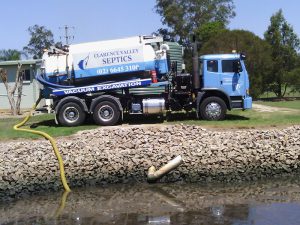Understanding the Impact of Liquid Waste and Proper Disposal
The sustainability of the environment, human health, and ecosystems are all seriously threatened by liquid waste, which is frequently disregarded amidst the myriad of environmental issues. Liquid waste includes a wide range of materials that need to be managed and disposed of with care, from household chemicals to industrial effluents. Here, we will explore the characteristics of liquid waste, their effects, and methods for disposing of it responsibly.
What is Liquid Waste?
Any waste liquid that has been thrown away and
contains impurities, pollutants, or hazardous compounds is referred to as
liquid waste. It may come from domestic settings, commercial settings,
agricultural operations, and healthcare facilities, among other places. Typical
instances of liquid waste are as follows:
Industrial Effluents: Manufacturing operations generate industrial effluents, which frequently
include poisons, heavy metals, and other dangerous materials.
Household Chemicals: Among the liquid waste in a household are cleaning products,
insecticides, and automobile fluids.
Agricultural Runoff: Water bodies are contaminated by pesticides, fertilisers, and animal
waste from agricultural activities.
Sewage and Wastewater: Sewage and wastewater disposal allow medications, detergents, and human
waste to find their way into water systems.
Medical Waste: Hospitals and other healthcare institutions produce liquid waste that
may include dangerous chemicals, medications, and infectious agents.
Impacts of Improper Liquid Waste Disposal
Improper liquid waste
disposal has significant negative effects on the environment and public
health:
Water Pollution: Liquid waste poses a threat to aquatic ecosystems and drinking water
sources by contaminating groundwater and surface water.
Soil Contamination: Industrial effluents and agricultural runoff deteriorate soil quality,
reducing fertility and yield.
Ecosystem Degradation: Toxic materials in liquid waste damage biodiversity and plant and animal
life.
Human Health Concerns: Long-term chronic illnesses, skin conditions, and respiratory disorders
are among the health concerns associated with soil and water contamination.
Economic Losses: Communities and governments bear significant financial burdens as a
result of cleanup and remediation operations related to liquid waste pollution.
Effective Liquid Waste Disposal Practices
Adopting thorough waste management solutions is
necessary to address the issues raised by liquid waste. Key procedures for
disposing of liquid waste responsibly are as follows:
Source Reduction: Reduce the production of liquid waste by employing ecologically suitable
substitutes, streamlining production procedures, and improving product designs.
Treatment and Neutralisation: Before being disposed of liquid waste must be treated to get rid of
contaminants and neutralise dangerous substances. Wastewater treatment is aided
by technologies including chemical precipitation, filtration, and
sedimentation.
Recycling and Reuse: To recover valuable resources from liquid waste streams, put recycling
programmes into place. A variety of industrial and agricultural processes can
use recovered materials and recycled water as inputs.
Appropriate Storage and Containment: To avoid spills, leaks, and unapproved discharge, store liquid waste in
safe tanks and containers. Sufficient containment protocols mitigate the
potential for environmental contamination.
Safe Disposal Techniques: Get rid of liquid waste by following environmental and local laws. Use
approved treatment centres, landfills, or incinerator plants to dispose of
liquid waste in a safe and environmentally responsible manner.
Public Education and Awareness: Educate the public, businesses, and people on the value of appropriate
liquid waste management. Encourage educational initiatives that address
pollution avoidance, recycling methods, and waste reduction.
Regulatory Compliance: Comply with all applicable laws and regulations for the disposal of
liquid waste. To reduce environmental hazards and liabilities, make sure all
licences, permits, and environmental requirements are followed.
In summary
Significant environmental and health risks are
associated with liquid waste, necessitating early action and long-term fixes.
You can lessen the negative effects of liquid waste pollution and preserve the
integrity of our ecosystems for future generations by implementing proper
disposal procedures, encouraging resource conservation, and cultivating
stakeholder engagement. You can create a cleaner, healthier, and more
sustainable environment by working together and making thoughtful decisions. If
you need services like waste oil
disposal and liquid waste disposal, you can contact Clarence Valley
Septics. They provide services like grease trap collection, chemical waste
removal, waste oil disposal, septic tank waste, portable toilet hires and more.
The experts of Clarence Valley Septics incorporate collection, transportation,
and processing of liquid wastes and industrial services from domestic,
commercial and industrial activities in the Clarence Valley and Coffs Coast
areas.





Comments
Post a Comment